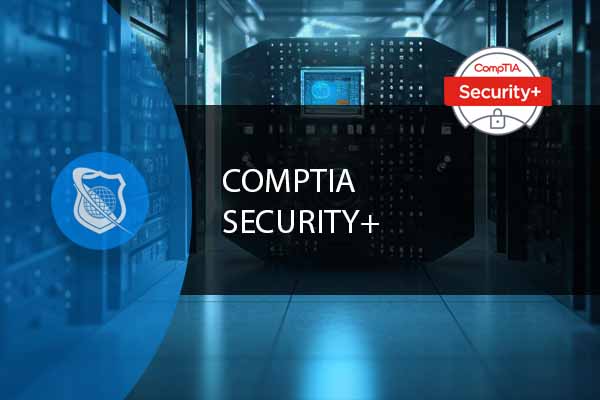Let’s discuss IDS and IPS. Intrusion Detection Systems (IDS) and Intrusion Prevention Systems (IPS) stand as critical components in the security infrastructure, each playing a unique role in detecting and preventing cyber threats. The importance of robustly safeguarding network and host systems against unauthorized access or attacks cannot be overstated. This comprehensive overview explores the intricate world of IDS and IPS, shedding light on their types, mechanisms, and deployment strategies to ensure a fortified security posture.
Network Administrator Career Path
This comprehensive training series is designed to provide both new and experienced network administrators with a robust skillset enabling you to manager current and networks of the future.
Understanding IDS and IPS
At their core, IDS and IPS serve to monitor network and system activities for malicious actions or policy violations. While both share the common goal of enhancing security, their approaches differ significantly.
- Intrusion Detection Systems (IDS) are designed to passively monitor and analyze traffic, identifying potential threats and alerting administrators. They do not take direct action to block or prevent the detected threat.
- Intrusion Prevention Systems (IPS), on the other hand, actively monitor network traffic to detect and prevent identified threats in real-time by blocking or rerouting malicious traffic.
Network-based vs. Host-based Systems
IDS and IPS can be categorized into network-based (NIDS/NIPS) and host-based (HIDS/HIPS) systems, each targeting different aspects of security.
- Network-based Systems (NIDS/NIPS) are positioned within the network to monitor and analyze all network traffic. They excel in identifying potential threats at the network level, such as unauthorized access attempts or anomalous traffic patterns, without delving into host-specific activities.
- Host-based Systems (HIDS/HIPS) are installed on individual hosts or servers, focusing on the activities within that particular system. They scrutinize events occurring on the host itself, including file changes, system calls, and logins, offering a granular view of potential threats that bypass network-level detection.

Information Security Manager Career Path
Propel your career forward and be part of an essential member of any management team as an Information Security Manager. This advanced training series is designed specifically for those want to move up into a management position in the IT field.
Detection Mechanisms: Signature-based vs. Anomaly-based
The effectiveness of IDS and IPS systems hinges on their detection mechanisms, primarily categorized into signature-based and anomaly-based detection.
- Signature-based Detection relies on a predefined database of known threat signatures, akin to antivirus software. It offers a straightforward approach to identifying known threats but falls short in detecting new, unknown attacks (zero-day threats).
- Anomaly-based Detection builds a baseline of normal network or system activity and flags deviations from this norm as potential threats. While capable of identifying novel attacks, this method is more prone to false positives, mistaking benign activities for malicious ones.
Deploying NIDS and NIPS
Network Intrusion Detection and Prevention Systems are deployed strategically within the network to maximize their threat detection capabilities.
- NIDS are placed in passive monitoring spots, often behind firewalls or alongside network entry points, to log and alert on suspicious activities without interfering with the traffic flow.
- NIPS take on a more proactive role by being placed inline with the network traffic, where they can directly block or alter malicious packets based on their analysis.
Insights into HIDS and HIPS
Host-based Intrusion Detection and Prevention Systems offer a complementary layer of security by focusing on individual hosts. They monitor detailed activities on the host, including file system modifications, system calls, and user actions, providing an in-depth analysis of potential threats that bypass network defenses.
The Evolution towards WiFi IPS
With the proliferation of wireless networks, WiFi Intrusion Prevention Systems (WIPS) have emerged as a crucial technology for protecting wireless networks from unauthorized access and attacks. WIPS monitor the wireless spectrum for rogue access points and malicious activities, employing automatic countermeasures to safeguard the network integrity.
Secure Your Networks and Prevent Password Breaches
Our robust CompTIA Sec+ course is the perfect resouce to ensure your company’s most valuable assets are safe. Up your security skills with this comprehensive course at an exceptional price.
Conclusion
The intricate landscape of Intrusion Detection and Prevention Systems underscores the complexity and necessity of comprehensive cybersecurity measures. By understanding the distinctions and synergies between network-based and host-based systems, as well as the nuances of signature and anomaly-based detection, organizations can tailor their security infrastructure to effectively combat the ever-evolving spectrum of cyber threats. As the digital frontier expands, the strategic deployment of IDS and IPS remains a cornerstone in the quest for a secure, resilient cyber environment.
Key Term Knowledge Base: Key Terms Related to Intrusion Detection and Prevention Systems (IDS and IPS)
Understanding the key terms associated with Intrusion Detection and Prevention Systems (IDS and IPS) is crucial for professionals and enthusiasts in the cybersecurity field. These systems are foundational components of network security, designed to detect and prevent unauthorized access, misuse, and modifications of computer systems and networks. Knowledge of the terminology not only facilitates better comprehension of how IDS and IPS function but also enhances the ability to effectively implement, manage, and troubleshoot these systems. Below is a curated list of essential terms that will provide a solid foundation for anyone looking to deepen their understanding of IDS and IPS technologies.
| Term | Definition |
|---|---|
| Intrusion Detection System (IDS) | A device or software application that monitors a network or systems for malicious activity or policy violations. Any detected activity or violation is typically reported to an administrator or collected centrally using a security information and event management (SIEM) system. |
| Intrusion Prevention System (IPS) | An extension of IDS that not only detects potentially malicious activity but also takes action to prevent the breach by blocking traffic or terminating sessions. |
| False Positive | Incorrectly identifying benign activity as malicious. This can lead to unnecessary actions that could disrupt legitimate user activity. |
| False Negative | Failing to detect actual malicious activity, allowing attackers to continue their actions without detection. |
| Signature-based Detection | A method of detecting known threats by comparing observed activity against a database of unique identifiers or patterns (signatures) associated with specific threats. |
| Anomaly-based Detection | A method that identifies suspicious activity based on deviations from a baseline of normal network or system behavior, aiming to detect previously unknown threats. |
| Heuristic-based Detection | Using algorithms to determine the likelihood that an activity is malicious based on various characteristics, rather than relying on known signatures or anomalies. |
| Behavior-based Detection | A technique that analyzes the behavior of network traffic or applications to identify unusual actions that might indicate a threat. |
| Network-based IDS/IPS | Systems that monitor and analyze network traffic for signs of malicious activity, typically deployed at strategic points within the network to cover all inbound and outbound traffic. |
| Host-based IDS/IPS | Systems installed on individual computers or devices to monitor and analyze their operations for signs of compromise. |
| Security Information and Event Management (SIEM) | A solution that aggregates and analyzes activity from many different resources across your IT infrastructure to identify potential security incidents. |
| Deep Packet Inspection (DPI) | A form of computer network packet filtering that examines the data part (and possibly also the header) of a packet as it passes an inspection point, searching for protocol non-compliance, viruses, spam, intrusions, or defined criteria to decide whether the packet may pass or if it needs to be routed to a different destination. |
| Snort | An open-source network intrusion detection system (NIDS) capable of performing real-time traffic analysis and packet logging on IP networks. |
| Suricata | An open-source network IDS, IPS, and network security monitoring engine. |
| Log Analysis | The process of examining logs to identify security incidents, operational problems, policy violations, and fraudulent activity. |
| Policy Violation | An occurrence where observed activity does not comply with the organization’s stated security policy, which may or may not be malicious in nature. |
| Security Policy | A set of defined rules and criteria for how to manage, protect, and distribute sensitive information within an organization. |
| Alert Threshold | The criteria or level of activity at which an IDS or IPS will generate a notification or alert about potential security issues. |
| Encrypted Traffic Analysis | The process of inspecting encrypted data to identify potential threats while maintaining the confidentiality of the information. |
| Zero-day Attack | An attack that exploits a previously unknown vulnerability in a computer application or operating system, before the software vendor has released a patch. |
| Sandboxing | A security technique that isolates potentially malicious programs within a confined environment to prevent them from affecting the host system or network. |
| Threat Intelligence | Information used to understand the threats that have, will, or are currently targeting the organization. This information is used to prepare, prevent, and identify potential threats. |
| Whitelisting | A security strategy that allows only pre-approved software, email addresses, users, or other entities to perform actions or access a system. |
| Blacklisting | A security strategy that blocks certain software, email addresses, users, or other entities from accessing a system based on a predefined list of banned entities. |
Frequently Asked Questions Related to IDS and IPS
What is the difference between IDS and IPS?
IDS, or Intrusion Detection System, is a monitoring system that detects suspicious activities and potential threats within a network. It alerts the system administrators or security professionals about these activities for further investigation. On the other hand, IPS, or Intrusion Prevention System, not only detects the threats but also takes proactive steps to prevent the threat from causing harm. IPS can block malicious traffic, drop harmful packets, or disconnect infected devices from the network based on predefined security policies.
How do IDS and IPS work?
IDS and IPS systems analyze network traffic and compare it against a database of known threat signatures or anomalous behavior patterns. IDS operates in a passive mode, monitoring, logging, and alerting on potential threats without interfering with the network traffic. IPS, however, is placed inline with the network traffic flow and actively analyzes and takes automated actions to prevent identified threats from executing their malicious intent.
What are the types of IDS/IPS?
There are mainly two types of IDS: Network-based Intrusion Detection Systems (NIDS) and Host-based Intrusion Detection Systems (HIDS). NIDS monitors network traffic for all devices on a network, while HIDS is installed on individual hosts and monitors inbound and outbound packets from the device only, along with system logs and file integrity. Similarly, IPS can be classified into Network-based Intrusion Prevention Systems (NIPS) and Host-based Intrusion Prevention Systems (HIPS), functioning similarly but with the capability to prevent attacks.
What are the challenges of implementing IDS and IPS?
Implementing IDS and IPS systems comes with several challenges, including the management of false positives (legitimate activity being flagged as malicious) and false negatives (malicious activity not being detected). These systems require constant updates to their databases to recognize the latest threats, and managing and tuning the systems can be resource-intensive. Additionally, IPS must be carefully configured to avoid unnecessary disruption to legitimate network traffic while effectively blocking malicious activities.
Can IDS and IPS replace firewalls?
No, IDS and IPS complement firewalls but do not replace them. Firewalls act as a barrier between secure internal networks and untrusted external networks, controlling access based on predetermined security rules. While firewalls primarily focus on blocking unauthorized access based on IP addresses and ports, IDS and IPS focus on monitoring and analyzing traffic for malicious activities and known threat patterns. Together, they provide a layered security approach to protect against a wide range of cyber threats.


























